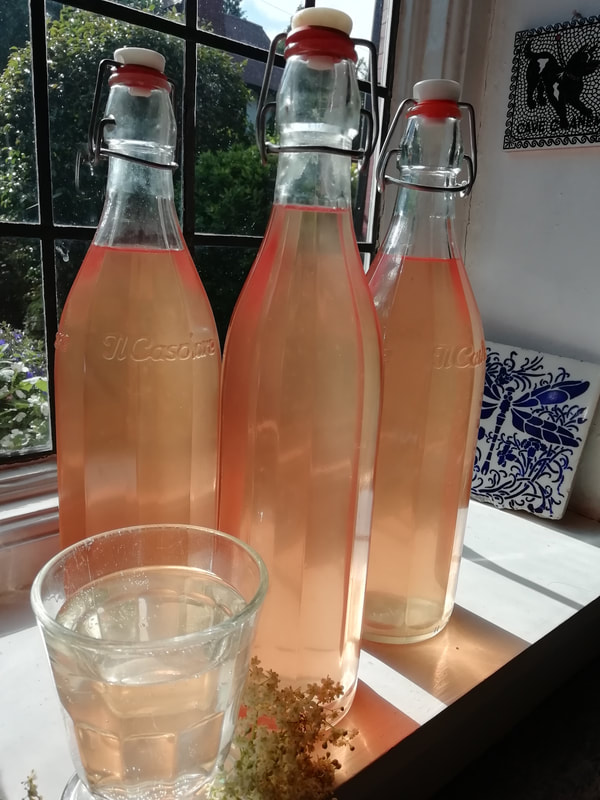|
Elderflower Cordial
Simple, beautiful and fresh. I have come to the conclusion that complicated recipes are not for me. Pick your elderflowers from a tree that isn’t too close to a road or a dusty path. I think that some trees have a different complex of aromas in their pollens from others – so it’s interesting over time to make batches of cordial from different trees and see if you can taste any variation. I also think that cordial made with flowers early in the season when they start to open tastes more floral than cordial made with later flowers, which tastes richer. That might be my imagination, but a world of elderflower cordial tasting is a pleasant place to be for a while. There are loads of cordial recipes out there but this is a combination of the Pam Corbin version in River Cottage Handbook No 2 Preserves (a must have) and the Fern Verrow version (another must have book for both the recipes and the photography). I have no idea if there is any medical sense behind this, but I have heard that children with hay fever were given elderflower cordial in olden days, in order to provide them with small doses of pollen to accustom their immune systems to the allergen in harmless amounts. A similar role has been claimed for honey. I’m not saying there’s any medical benefit to elderflower cordial, only that it tastes superb and you are using a bountiful natural resource. Depending on the space in your fridge or freezer and how long you want your supply to last, you can make this without the citric acid if you like. Then it will keep only a few weeks on the shelf and will need to be refrigerated once open. You can make it and freeze it in plastic bottles, but I never have the room in my freezer for that and am trying to minimise my use of plastic in food preparation anyway. I use old glass olive-oil bottles, the ones with the swing-cap lids and I find that the cordial keeps several months in a cool place, which is as long as the supply lasts in our house and by that time we’re into the more winter-ish fruity cordials as the season rolls round. You can make up the cordial with water, fizzy water or lemonade. If you want a Hugo Cocktail, add lime juice, mint leaves and prosecco and waft around the garden looking and feeling lovely. Makes about 2 litres Timings: 1 hour to pick and start the steeping, overnight steeping, then about 30 minutes to boil up and bottle
Pick your elderflowers and bring them home as soon as possible, breathing in the scent from the bag every now and then. Shake off any insects or dust but don’t wash them. Put them in a large bowl (not plastic) or pan. Using a potato peeler, peel the lemons and the orange and add the peel to the flowers while you boil the kettle. Keep the peeled fruit in the fridge. Pour the boiling water over the flowers/peel, cover the bowl with a tea towel and leave to infuse and steep overnight. Next day, strain the liquid out through your jelly bag. I hang mine from the cupboard where we keep our glasses so I have to be sure to start the straining only after we’ve laid the table for breakfast. Let the liquid strain for about 30 minutes and don’t squeeze the bag or you will get a cloudy cordial. While it’s dripping through, squeeze the lemons and the orange, and strain out any pips. Measure all the liquid that you have – the juice and the strained elderflower liquid – into a large pan – you should have about 2 litres. Per litre of liquid add 700g sugar and 2 teaspoons of citric acid, if using. Bring to a rolling boil and skim off the pollen-laden scum that comes to the surface. While it’s coming to the boil, boil up your kettle and sterilise your bottles. Bottle the cordial while it’s still hot and clip the lids on, so the cooling down closes the lids more tightly. When cool, wipe the bottles, label and keep them in a darkish place.
0 Comments
Leave a Reply. |
Some Changes - April 2022
Thanks to my friends and followers for your patience, and for your encouragement to start blogging again. Archives
April 2022
Categories
All
|

 RSS Feed
RSS Feed
